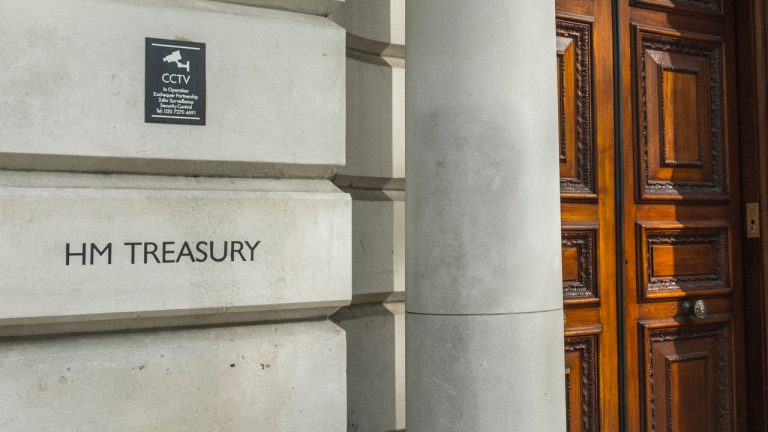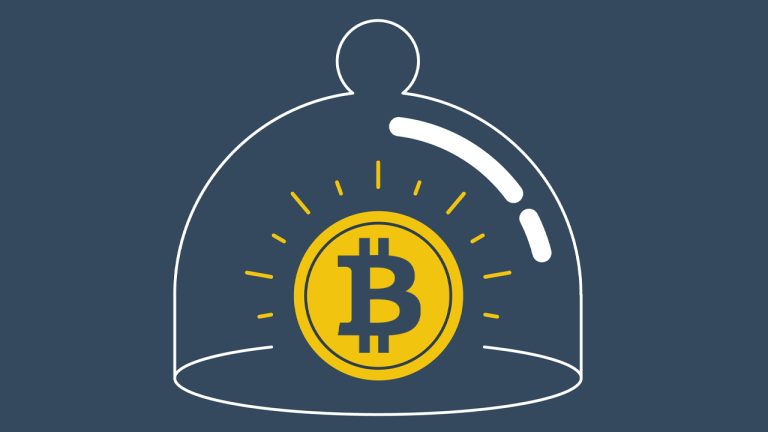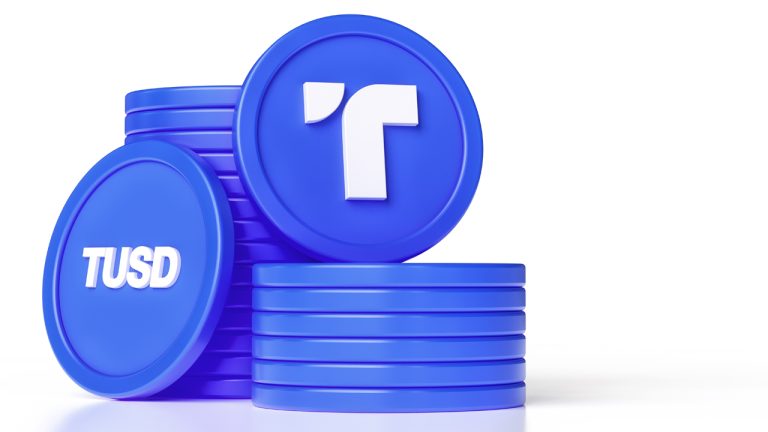 After Credit Suisse Group AG announced it would borrow 50 billion Swiss francs from the Swiss National Bank, UBS Group AG is reportedly considering acquiring the banking giant. However, UBS is requesting that the government issue a backstop to protect against any losses if it purchases Credit Suisse. According to unnamed sources familiar with the […]
After Credit Suisse Group AG announced it would borrow 50 billion Swiss francs from the Swiss National Bank, UBS Group AG is reportedly considering acquiring the banking giant. However, UBS is requesting that the government issue a backstop to protect against any losses if it purchases Credit Suisse. According to unnamed sources familiar with the […] An investigation into digital asset exchanges in the Russian capital has established that some of them are ready to buy digital coins and deliver paper money in the U.K. The transfer of funds does not usually involve the identification of the clients, Transparency International Russia reveals in a report. Russia-based Cryptocurrency Exchanges Swap Stablecoins for […]
An investigation into digital asset exchanges in the Russian capital has established that some of them are ready to buy digital coins and deliver paper money in the U.K. The transfer of funds does not usually involve the identification of the clients, Transparency International Russia reveals in a report. Russia-based Cryptocurrency Exchanges Swap Stablecoins for […] Taxpayers in the United Kingdom will have to report cryptocurrency assets separately in their tax documents for the tax year 2024-25, according to the Exchequer’s recently published spring 2023 budget. New Criminal Offenses Planned by U.K. Government to Combat Tax Avoidance Amid the chaos in the banking sector following the collapse of Silicon Valley Bank’s […]
Taxpayers in the United Kingdom will have to report cryptocurrency assets separately in their tax documents for the tax year 2024-25, according to the Exchequer’s recently published spring 2023 budget. New Criminal Offenses Planned by U.K. Government to Combat Tax Avoidance Amid the chaos in the banking sector following the collapse of Silicon Valley Bank’s […] On Monday, Binance CEO Changpeng Zhao, also known as CZ, announced that the company had decided to convert $1 billion worth of BUSD from the Industry Recovery Initiative fund into three different cryptocurrencies. Zhao noted that significant onchain movements would be noticeable following the announcement. CZ’s Decision to Convert $1 Billion BUSD Comes Amidst Troubles […]
On Monday, Binance CEO Changpeng Zhao, also known as CZ, announced that the company had decided to convert $1 billion worth of BUSD from the Industry Recovery Initiative fund into three different cryptocurrencies. Zhao noted that significant onchain movements would be noticeable following the announcement. CZ’s Decision to Convert $1 Billion BUSD Comes Amidst Troubles […] According to a recent warning by the U.S. Public Company Accounting Oversight Board (PCAOB), crypto proof-of-reserve (POR) audits have limitations, and the board believes that investors should exercise caution when dealing with companies using POR audits. PCAOB Calls for Investor Caution and Due Diligence When Using Proof-of-Reserve Reports The U.S. accounting watchdog recently issued an […]
According to a recent warning by the U.S. Public Company Accounting Oversight Board (PCAOB), crypto proof-of-reserve (POR) audits have limitations, and the board believes that investors should exercise caution when dealing with companies using POR audits. PCAOB Calls for Investor Caution and Due Diligence When Using Proof-of-Reserve Reports The U.S. accounting watchdog recently issued an […]
Should crypto media have a universal code of ethics, and what role — if any — should journalists play in promoting crypto mass adoption?
2022 was a rather challenging year for the crypto sector, and the prevalence of Ponzi schemes, decentralized finance scams, nonfungible token rug pulls and questionable centralized exchange bookkeeping put the issue of ethics in the space on blast.
Of course, the negative news of last year wasn’t an outlier or a one-off — generally, “good” ethics have been an issue in crypto for years, and it’s probably safe to assume that challenges will continue to dot the landscape for the foreseeable future.
Within the context of media, it’s important to recognize that objective, unbiased news reporting and transparency are paramount if the industry is to earn the trust of the wider public and, as a result, change the negative perspectives people often hold about it.

In the latest episode of Cointelegraph’s podcast The Agenda, hosts Ray Salmond and Jonathan DeYoung sat down with crypto media vet Molly Jane Zuckerman to discuss her experience with ethics challenges in the industry and her ideas on how to integrate best practices into the sector.
When asked by Salmond about the most important things to fix in crypto media and the potential for journalists to experience a “kind of shadowy pressure to do what’s in the company’s best interest,” Zuckerman suggested that drastic improvements in transparency are needed. She mentioned that the Association of Cryptocurrency Journalists and Researchers, an organization she co-founded, has been working on a standards guidebook to help reporters and news agencies alike:
“It is something I spend a lot of time thinking about, just even outside of my day job, is how do we make sure that people working in crypto have sort of a rule book to follow beyond just what their newsroom might tell you might tell them.”
Zuckerman elaborated:
“I think the issue is if you have access to do something that’s so easy for really big money, it can really tempt a lot of people. So, I think that even people with very, very high moral standards and very clear ethical boundaries — at least I’ve seen this in a few companies I’ve worked for, [they] will purposely not give them access to parts of the site that would tempt them.”
When asked whether crypto’s ethics crisis stems primarily from companies and their profit objectives or from the capacity of journalists to be compromised, Zuckerman suggested that it could be a mixture of both. She also takes issue with the fact that many crypto media outlets and journalists see their mission as to help catalyze mass adoption, saying:
“I don’t think it [crypto media] should help catalyze mass adoption, personally. I think crypto media should just lay bare the facts of what is happening in the space. And I think, unfortunately, right now, if crypto media did a neutral job of that, then most people would probably leave the space because it would just be articles about bankruptcy after bankruptcy after bankruptcy.”
According to Zuckerman, the true purpose of crypto media is to educate readers:
“I don’t think that any media outlet should ever have a goal being, like, let’s get more people to use cryptocurrency. I think it should be, let’s get more people to understand how it works. But if they understand how it works and hate it, then that’s the same positive result to me as understanding how it works based on an article you read and liking it.”
To hear more from Zuckerberg, tune in to the full episode of The Agenda on the Cointelegraph Podcasts page, Spotify or Apple Podcasts — and be sure to check out Cointelegraph’s other shows as well.
The views, thoughts and opinions expressed here are the authors’ alone and do not necessarily reflect or represent the views and opinions of Cointelegraph.
 On Wednesday, the stablecoin project Trueusd announced that it is leveraging Chainlink Proof of Reserve (POR) technology to provide real-time verification for the minting of trueusd tokens. The trueusd crypto asset has a circulating supply of over 968 million tokens and is the sixth-largest stablecoin by market capitalization. Archblock Uses Chainlink to Verify Reserves Before […]
On Wednesday, the stablecoin project Trueusd announced that it is leveraging Chainlink Proof of Reserve (POR) technology to provide real-time verification for the minting of trueusd tokens. The trueusd crypto asset has a circulating supply of over 968 million tokens and is the sixth-largest stablecoin by market capitalization. Archblock Uses Chainlink to Verify Reserves Before […]
PFP NFTs have seen a lot of adoption over the years. Can NFTs be valuable in real-world scenarios and address pain points with supply chains?
Technology is often only a means to an end and is seldom a silver bullet. There are several real-world issues that can hinder progress with rolling out NFTs and blockchains across supply chains globally.
The benefits of digital twins for real-world goods can’t be underestimated. However, today’s supply chains globally are extremely intermediated and run on trust. A farmer in Africa sells their produce to an intermediary as they have for years. This develops a certain amount of trust between the two parties.
As a result, resistance to change would be high, even when the farmer realizes that they will accrue value better in a more transparent supply chain. On the other hand, the intermediary wouldn’t want a new system, as their livelihood relies on the margins they make using the farmers’ produce.
Consequently, supply chains are susceptible to resistance from various stakeholders to such implementation. Drug supply chains could become extremely efficient with nonfungible tokens and blockchains. Yet the industry thrives in countries such as India and Nigeria, and corrupt stakeholders across the supply chain would be opposed if a new system is proposed.
Therefore, any technology being introduced into these supply chains will need to have both a top-down approach and a bottom-up approach. The top-down approach will involve governments and regulators mandating better traceability; the bottom-up approach would be firms solving this issue by working on the ground with stakeholders and spreading awareness of the benefits of the technology.
Several luxury and logistics brands use blockchain technology and NFTs to track their products and create digital twins that can help with community-building initiatives.
Major marquee brands in the auto, luxury and retail industries have already started integrating NFTs into their supply chain to obtain the innumerable benefits they offer.
Walmart utilizes digital twin technology to track the food supply chain ecosystem, increasing trust. Automobile giant Ford uses digital ledger technology to ensure it gets ethical minerals for production.
The diamond behemoth De Beers also uses blockchain to validate whether diamonds are sourced from war-free zones. Along with this, transportation companies such as FedEx and Maersk use this technology for their operations.
Luxury brands such as DeBeers, Louis Vuitton, Dolce and Gabbana, and Gucci have turned to NFTs for customer integration and loyalty. As nonfungible tokens act as digital twins of real-world goods, they not only offer transparent supply chains but also greater community retention through customer experience.
Customers can see where products come from and the various routes they take before arriving at supermarkets.
Last but not the least, the end-consumer will get access to the evolution of a product. They have transparency on where the raw materials were produced and the companies that were involved in the production. This offers another dimension from a customer experience perspective bringing creators of products closer to the end-user.
In the FMCG, pharmaceuticals and sectors where expiry and counterfeiting are a major hassle and could potentially lead to catastrophic consequences, NFTs can be a lifesaver. Along with that, the trust factor in brands also increases among customers. Apart from the primary benefits, NFTs can help make supply chains more sustainable, which in turn can help the environmental, social and governance (ESG) narrative of businesses.
As nation-states, central banks and the markets demand more sustainable practices from global businesses, ensuring a transparent and efficient supply chain can help firms with their ESG narrative. Should a company wish to weave sustainable practices into its supply chain, carbon efficiencies achieved through the use of NFTs could be a great value add. For the new age-conscious consumer, this means sustainable products, and for the globe, it means lower emissions.
Real-time tracking, settlement and documentation of the supply chain cannot only create more efficiencies for businesses but also help with better financial products that they can rely on for their operating capital.
NFTs create a digital record that is immutable and transparent. What this offers the supply chain industry is a transparent trail where everyone in the ecosystem would have complete visibility. Therefore, right from producing the raw material for goods to displaying them on a website or brick-and-mortar shop, the usage of NFTs will provide traceability and help in supply chain management.
Phygital NFTs have proven to be a great utility when they are tagged to real-world goods. Using NFTs for tracing a good or a manufactured product right to its source can add credibility to the product. It can also offer consumers a method to understand the source of the product they are looking at and choose one based on the providence of the product.
Apart from traceability, NFT-gated procurement and NFT-gated warehousing will help data scientists with valuable insights into product journeys at an individual level. Such granular data will help analysts, business owners and investors assess inefficiencies in the supply chain. This will help set new service level agreements (SLAs) with service providers on the supply chain and monitor them to hit these SLAs.
Furthermore, weaving NFTs and digital twin technology into the supply chain will enable companies to automate payments through the system and perform instant settlement once goods are delivered. Multiple checks and balances before transferring payment for finance teams would be a thing of the past once real-time traceability is enabled.
Real-time tracking will also help financing products like trade finance, where the status of goods can be used to borrow working capital by stakeholders on the supply chain. Supply chain managers who have an enhanced vantage point can intervene at the right checkpoint in the event of congestion or bottlenecks. This makes supply chains more efficient, resulting in better revenues and lower costs.
NFTs can be used in supply chains to make them more transparent and efficient, leading to several billion dollars being saved. This is yet another space where Web3 technologies can have real-world applications.
The supply chain is an integral part of any business. Right from pharmaceutical giants and fast-moving consumer goods (FMCG) behemoths to local direct-to-customer brands, most businesses are dependent on efficient and resilient supply chains to deliver their products and services effectively. Despite being a vital cog in the wheel for organizations, supply chain networks are far from efficient on a global scale.
One of the key applications of blockchain technology has been traceability in a supply chain. This feature of the technology has been experimented with in trade finance use cases by banks such as HSBC. This is a use case that relies more on smart contracts and blockchain infrastructure layers like the Ethereum and Solana blockchains.
While nonfungible tokens (NFTs) as a technology paradigm were not necessarily planned to disrupt supply chains, they can bring about a massive transformation of pain points in this space. NFTs can act as “digital twins” of real-world goods and can help traceability within supply chains.
Here are a few numbers, statistics and narratives to put things into perspective.
The scale of the problem can be understood from the numbers above, and NFTs can offer solutions to these inefficiencies. Adding to this, there are also other interesting use cases that lie at the convergence of blockchain and supply chain, which is discussed later in this article.
 On Feb. 10, 2023, Republicans Patrick McHenry of North Carolina and Bill Huizenga of Michigan, both members of the U.S. House of Representatives, sent a letter to Securities and Exchange Commission (SEC) chairman Gary Gensler seeking answers about the arrest of FTX co-founder Sam Bankman-Fried prior to his scheduled testimony before the House Financial Services […]
On Feb. 10, 2023, Republicans Patrick McHenry of North Carolina and Bill Huizenga of Michigan, both members of the U.S. House of Representatives, sent a letter to Securities and Exchange Commission (SEC) chairman Gary Gensler seeking answers about the arrest of FTX co-founder Sam Bankman-Fried prior to his scheduled testimony before the House Financial Services […] According to a recent mission statement published by the International Monetary Fund (IMF), El Salvador has adopted bitcoin as legal tender and has avoided risks so far. The IMF states that the risks have not materialized due to the limited use of bitcoin. However, the United Nations financial agency warns that if its legal tender […]
According to a recent mission statement published by the International Monetary Fund (IMF), El Salvador has adopted bitcoin as legal tender and has avoided risks so far. The IMF states that the risks have not materialized due to the limited use of bitcoin. However, the United Nations financial agency warns that if its legal tender […]